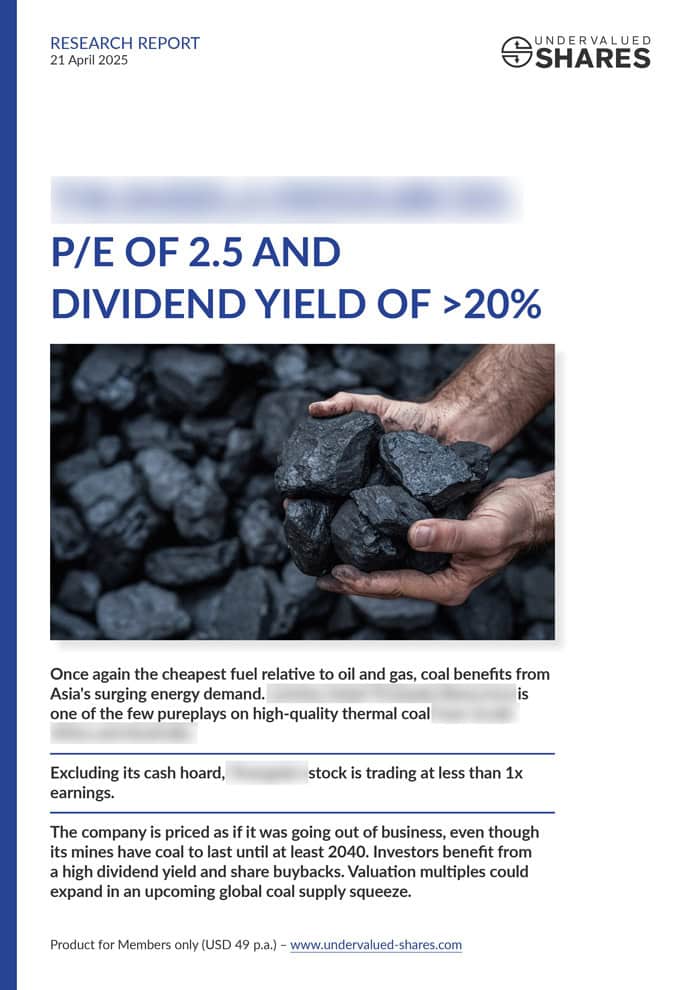I turn 50 today. What have I learned about investing so far?
The wisdom of investing in subscription businesses
At my recent investor event in Poland, one company got far more attention from the audience than any other. At the end of their CEO’s presentation, I could see people look at each other and say: “Wow, we got to buy this stock!”
The magic sauce of this company’s pitch?
They run a subscription-based business model that has a 99% extension rate and just 1% annual customer churn. Put another way, the majority of their subscriptions will generate annual payments for decades.
Speak of a secure income base! Add in growing user figures and economies of scale, and you have a financially potent mixture.
Some investors have already latched onto the attractions of subscription businesses, but it’s so powerful a business model that it’s worth taking a look at in some more detail.
The ins and outs of subscription-based businesses
I have been evangelising about the strength of subscription-based businesses for decades.
The example that I've always referred to is Annabel’s, a restaurant and nightclub in London. You don’t usually associate this kind of business with subscription-based business models. However, as a private members' club that charges an annual fee, it is, ultimately, a subscription: you subscribe to the right to visit the club and spend your money on overpriced food and drinks.
Several years back when I was a member, Annabel's charged an annual membership fee of GBP 1,000. The club was rumoured to have 10,000 members. In other words, the owner of Annabel’s had a cool GBP 10m rolling in through the door on 1 January each year, simply because members chose to extend their membership (and the few who cancelled were replaced with names from the waiting list).
No wonder then that Annabel’s sold for an impressive GBP 100m in 2007. Not bad for a restaurant that had started in a derelict basement!
A somewhat more contemporary example is that of Netflix (ISIN US64110L1061), which now counts an incredible 45% of Americans among its subscribers. That’s 57m Americans who let Netflix take USD 10.99 directly from their bank account or credit card every month. Indeed, a common factor among subscription-based business models is their regular cash generation. While most other companies need to fight for every new sale, subscription-based businesses have their clients locked in and receive recurring payments.
Not only is this a neat model, but it’s also spreading into all sorts of new sectors (not just newspapers and magazines, as has been the case previously). There is an increasing appetite among consumers for renting products (instead of buying them):
- You no longer buy CDs to listen to music, you subscribe to Spotify (ISIN LU1778762911).
- Women no longer need to buy expensive fashion items (such as handbags), they can subscribe to "own" them for a limited period of time.
- Tech users can get the latest software through a subscription-based service. Software as a Service (“SaaS”) companies have enjoyed explosive growth.
Investors love subscription-based business for the following reasons:
Predictability: Companies that run subscription models don’t have to start at zero every year. Instead, they can tell you in advance how much baseline revenue they are likely to generate.
Growth: The steady cash flow allows companies to invest in growth, often building on the potential for “upselling” their customers to additional services.
Metrics: Subscription-based businesses come with some very convenient and informative metrics, such as the retention rate, the amount of recurring revenue, and the so-called growth efficiency index (= how much new recurring revenue a company gets from a given investment in sales and marketing).
Cynics would say that this is new wine in old bottles. Subscription-based businesses do tend to spend more care towards interacting with their customers on a regular basis, measuring what services they are using, and delivering to them on their needs. However, that’s what ANY good business should do.
Be that as it may, the theme has been gaining increasing attention from investors.
Indices to track the sector
Just a few weeks ago, another dedicated index was launched to track companies that provide services through subscription-based models. The Indxx Subscription Economy Index is the second such index. It joins the existing Subscription Economy Index (SEI) published by Zuora (ISIN US98983V1061), a cloud-based software company that provides services to subscription-based businesses.
Zuora claims that from 2012 to 2018, the companies featured in the SEI had grown their revenue by a rate of 18% p.a., or 300% over the entire seven years. This would have made this sector of the economy grow its revenue five times faster than the S&P 500 company revenue, and ten times faster than the companies of the German DAX index or the Australian ASX index.
Zuora’s dataset shows just how broad this sector has already become, even though most investors still associate subscription-based businesses either with the media, or with Saas, telecom, and Internet of Things (IoT).
Two great examples to read up on – New York Times and Apple
If you want to immerse yourself in the subject matter, I urge you to read the following stories of two familiar companies.
Both of them are extraordinarily good pieces of content!
Mine Safety Disclosures, a little-known finance blog, just published a 167-page (!) PowerPoint presentation about “The (Not Failing) New York Times”. Its focus is the subscription-based business model of The New York Times (ISIN US6501111073), and what the business model could do for the company’s shareholders over the coming years. The document is a piece of art, and one of the best pieces of free content that I have come across during the past few months.
A similarly useful piece is “Unleash the mouse”, by Scott Galloway. It deals with the changing business model of Apple (ISIN US0378331005) towards subscription-based income. The shift has led to a revaluation of Apple stock because investors value the company’s increasingly predictable revenue – check back the point mentioned above about predictability.
“What about the Polish opportunity?”
For those of you who are wondering about the stock mentioned at the beginning of this article, it’s Polski Bank Komórek Macierzystych (ISIN PLPBKM000012), also known as PBKM (it's among the presentations that I've included in last week’s report about my investor trip to Poland). The company is Europe’s market leader for operating stem cell banks. Amazingly, the market leader for such an innovative industry is from Poland, not from one of the Western European nations that you’d typically expect to produce such a European champion.
My Lifetime Members received a 59-page in-depth report about the company at the end of May. The stock price is already up a bit, but it’s probably still at the very beginning of a long-term trend that will see it rise throughout the 2020s. Why am I so confident saying that? So far, only 2% of Europeans opt to use a stem cell bank. In the US, it’s already 4%. In Singapore and Taiwan, it’s 10% and 23%, respectively. Buying this Polish company is a way to capture future growth that in other markets has already become a reality.
PBKM will probably become one of three global champions in its industry, besides the market leaders in Asia and the US. Lest I forget to emphasise it, their subscription-based model has an extraordinarily low 1% customer churn rate! My report captured the entire growth story in all its detail.
Most likely, the company will soon merge with its largest German competitor and then pursue a new primary listing on the Frankfurt Stock Exchange. It could be worth investing now, even though PBKM stock is a bit tricky to trade due to its lack of liquidity.
If you’d like to read the full report on PBKM, sign up for a Lifetime Membership if you haven't already. My Lifetime Members also just received an update about PBKM today, which anyone joining anew will find in the "Lifetime Members" tab in their account.
Did you find this article useful and enjoyable? If you want to read my next articles right when they come out, please sign up to my email list.
Share this post:
PBKM report and more – exclusively for Lifetime Members
My May 2020 report on Polski Bank Komórek Macierzystych (PBKM) is one of four extra investment opportunities per year that are only shared with my most dedicated readers: Undervalued-Shares.com Lifetime Members. Because these stocks are thinly traded, I need to limit them to a smaller number of readers.
Lifetime Members enjoy all the benefits of Annual Members (my 10 best investment ideas every year, regular report updates, email alerts etc.), plus a couple of extras:
- Priority booking of reader events and trips.
- Deeper engagement, such as involvement in the content of my next book.
- Investment opportunities that are not liquid enough for the general readership.
The last point will get my Lifetime Members four additional reports per year.
If you, too, would like to access these reports, I recommend you sign up now.








